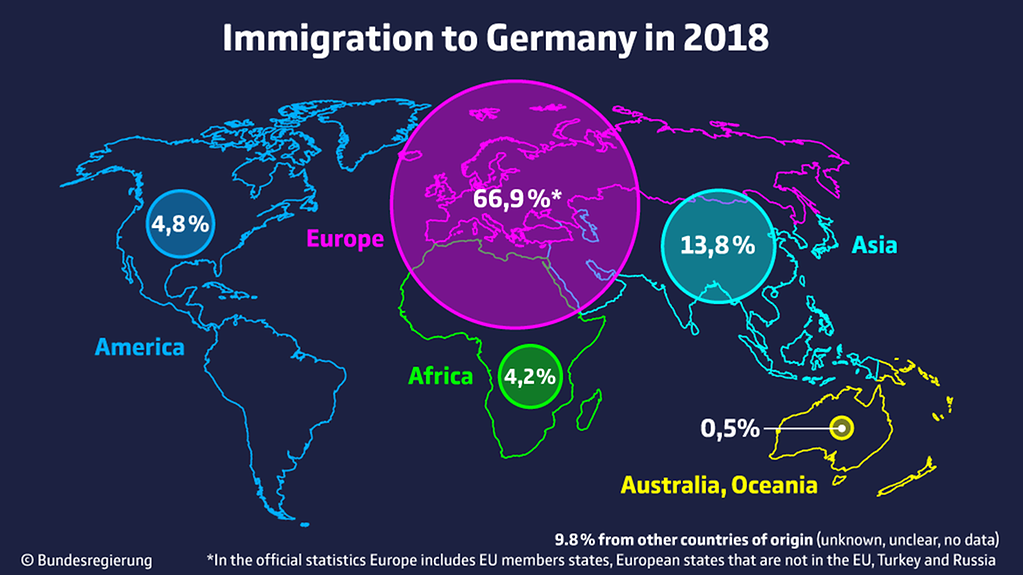Migration Report 2018
Inward migration to Germany is changing. More and more people are coming to work or study here. Germany is particularly popular among other Europeans: in 2018 two thirds of all migrants arriving in Germany came from another European state. Parallel to this, the number of people requesting asylum has dropped significantly, states the latest Migration Report
2 min reading time

In 2018 more than two thirds of all immigrants to Germany came from another European country
Photo: Bundesregierung
The Cabinet has adopted the Migration Report 2018 presented by the Federal Ministry of the Interior. The most important findings are that in 2018 a total of 1.59 million people moved to Germany, roughly equivalent to the 2017 figure. The underlying reasons have changed though. Fewer people have come to Germany for humanitarian reasons, while more are deciding to come to study or work here.
The figures in detail
- In 2018 the number of first-time requests for asylum dropped by 18.3 per cent, meaning that the numbers of refugees coming to Germany has declined further.
- 1.59 million people moved to Germany in 2018. More than two thirds of them (66.9 per cent) came from another European state, with more than one in two of this group (53 per cent) coming from another EU member state. The second largest group of migrants (13.8 per cent) came from Asia. Only 4.2 per cent of migrants came from Africa and about 5.3 per cent from America, Australia or Oceania.
- In 2018, 1.2 million people left Germany. Net inward migration was thus 400,000, which is the lowest level recorded since 2013.
- The number of family members of immigrants admitted was 15.4 per cent down.
- More and more people are coming from third countries to work in Germany. They totalled around 61,000 in 2018. Two thirds of this figure (39,000) were skilled workers.
- In 2018 about 12,000 people came to Germany with a Blue Card, which is a resident permit issued for purposes of taking up employment. The main countries of origin of Blue Card holders were India, Russia and Turkey.
- Germany is also popular among foreign students. During the winter semester 2018/2019 a total of 395,000 people from abroad studied at German universities. This was a good 20,000 more than the previous year.
- Almost one quarter (20.8 million) of the 81.6 million people who live in Germany had a migrant background.
- The majority (65.4 per cent) of non-German citizens living in Germany have lived here for ten years or longer, and about half have counted Germany as their home for at least 20 years. 13.7 per cent of this group has actually resided here for 40 years or more.
The Migration Report contains extensive statistical data on general migration, a detailed presentation of the different types of migration and a European comparison of migration trends. It provides information about the structure of the non-German population and the section of the population with a migrant background. The Report is produced by the Federal Office for Migration and Refugees. Once the Report has been adopted by the Cabinet it will go to the German Bundestag and the Bundesrat.